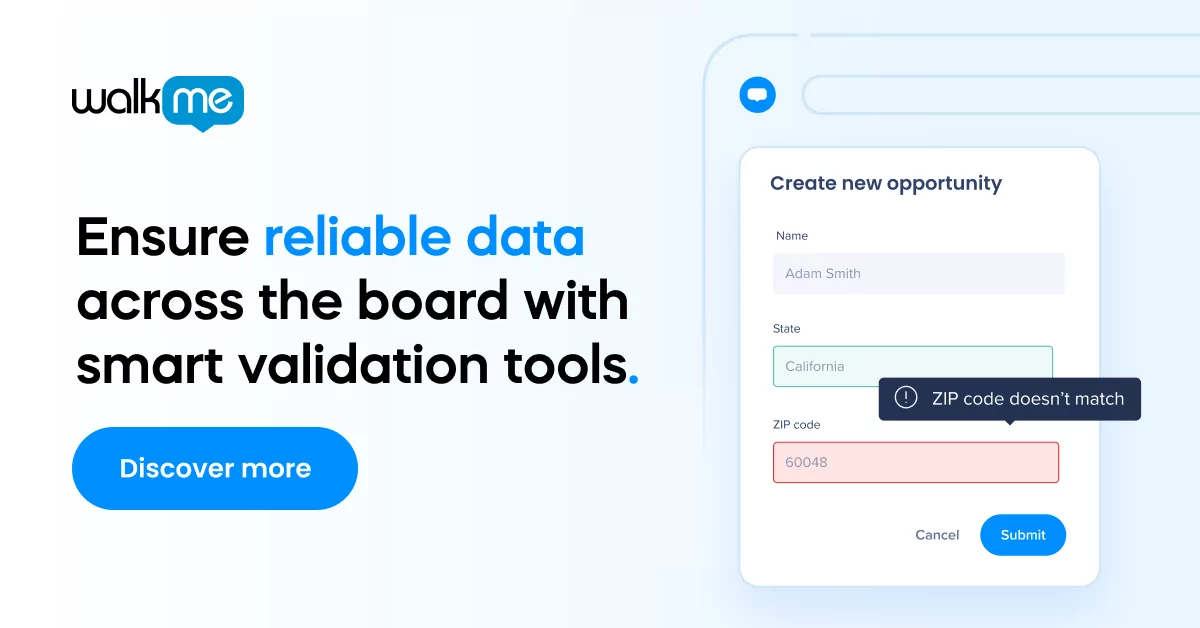Among enterprise-level organizations, it is recognized that software onboarding impacts the transition to new platforms, but it can be just as important to focus on designing a smooth software offboarding procedure.
Offboarding from one platform, after all, is performed in tandem with onboarding to another—and since both processes are interdependent, they should be planned and executed simultaneously.
In this post, we will cover why both processes are critical obstacles to surmount and how to plan accordingly for the transition.
Software onboarding vs. adoption
Since today’s digital ecosystem is rapidly and continually evolving, the digital adoption cycle is quickly becoming a focal point for business leaders in the modern organization.
Rather than viewing software implementation as a discrete process that occurs from time to time, to keep up with the pace of digital change, digital adoption has become a constant for many top companies.
There are several terms for this cycle, including:
- Product adoption
- Software adoption
- Technology adoption
- Digital adoption
We believe that the term every digital-first enterprise should embrace is “digital adoption,” since this model encompasses both the technical and human sides of the adoption equation with the intent of maximizing software utilization and user performance.
Regardless of how you label it, there are a few stages that should be emphasized during the adoption journey:
Onboarding focuses on producing a positive first impression, simplifying the software experience, and demonstrating product value. During this stage, product developers and training providers will often use product tours, software walkthroughs, and other similar methods to maximize engagement.
Training is designed to improve users’ overall proficiency, since software ROI and user performance depends directly on their skills with that software. In digital workplaces where adoption has become an embedded business function, modern and scalable training solutions such as digital adoption platforms (DAPs) are replacing older, less dynamic training methods.
Support can refer to both customer care and technical support. These are both necessary to help resolve potential issues, improve the user experience, reduce user abandonment, and, ultimately, improve software ROI.
For best results, the digital adoption cycle should be treated like any other business process. This means that the procedure must be standardized, systematic, and continually improved upon.
Why offboarding is key to successful software transitions
Employees rarely begin using a new software application from scratch. Instead, they almost always transition from existing apps to new ones.
Since that process can become quite involved, especially with large-scale migrations that affect significant numbers of employees, it is important to plan this process carefully.
If this process isn’t executed properly, employees may resist change, technical errors can become major stumbling blocks, and setbacks in the adoption process could interfere with other business plans.
On the other hand, effective offboarding can:
- Ensure that employees are fully prepared for their new systems
- Minimize resistance to change
- Reduce the chances that technical or logistical errors will hamper the transition process
- Shorten learning timelines for the next product
To achieve benefits such as these, it is important to design a plan that addresses both the technical and the human aspects of change management.
Key focal points when creating an offboarding plan
Phasing out old software applications can take weeks, months, or years, depending on how integral and complex the old software was. Transitioning from an old to a new workplace chat application, for instance, would be far less involved than migrating from one HCM platform to another.
For that reason, it is important to approach this process with care and create a well-structured offboarding plan from the onset.
Here are a few areas to focus on:
The scope of the transition
How large will the shift be and who will be affected?
Adopting a new CRM platform will certainly affect the sales and marketing departments. Yet to be useful, CRMs must also be integrated with other business tools, such as marketing experience tools, other analytics platforms, customer service platforms, and financial software, to name a few.
When designing an offboarding process, one of the first steps should be to perform business impact analyses to determine whose work will be affected and by how much.
Employee skills and the employee experience
Employee training should begin well before the workforce moves to a new tool.
Starting training during offboarding can reduce the chances that employees will cling to the old platforms, accelerating both the offboarding and onboarding processes.
While training can go a long way towards reducing employee resistance and increasing productivity, change managers shouldn’t neglect the employee experience.
How employees experience the transition will affect sentiment, attitudes, and behavior, all of which will determine how smoothly they can move from the old platform to the new one.
The first step towards improving the employee experience is understanding it and breaking down the transition process into manageable components.
Employee surveys, change readiness assessments, gap analyses, and similar tools can all be useful ways to gain insight into employee needs and how the transition will affect them.
IT services management
The discipline of change management is dedicated to overseeing organizational changes and tackling many of the areas covered above.
Managing the people side of change is certainly a prerequisite for successful migration. However, since software offboarding and onboarding both revolve around IT service changes, it is also necessary to involve IT leaders, such as CIOs. They will likely leverage methodologies such as ITIL, COBIT, and other IT frameworks to minimize disruptions to IT services—and to ensure that both the customer and the employee experiences remain unaffected.


